
Neiva: The Heartbeat of Huila
Discover Neiva, the vibrant capital of Colombia's Huila Department, where history, culture, and natural beauty converge for an unforgettable travel experience.
Neiva, the capital of the Huila Department, is a hidden gem in Colombia's Andean region. Known for its warm climate and friendly locals, it serves as a perfect gateway to explore the southern part of the country. The city is located on the banks of the majestic Magdalena River, providing an enchanting backdrop for your visit. Neiva is rich in history and culture, with roots tracing back to pre-Columbian times. The city's museums, such as the Huila Archaeological Museum, offer a glimpse into its past, showcasing artifacts from indigenous communities. Don't miss the city's vibrant festivals, like the San Pedro Festival in June, which features traditional music, dance, and colorful parades. Nature lovers will find plenty to do in Neiva. Nearby attractions include the Tatacoa Desert, a surreal landscape of red and grey rock formations that is perfect for stargazing. The Betania Reservoir offers opportunities for water sports and fishing, while the lush hills around Neiva are ideal for hiking and bird watching. Whether you are seeking adventure or relaxation, Neiva has something to offer for every type of traveler.
Local tips in Neiva
- Visit the Tatacoa Desert at dusk for the best stargazing experience.
- Try the local dish 'Asado Huilense' for an authentic taste of the region.
- Book your accommodation in advance during the San Pedro Festival, as the city gets crowded.
- Take a guided tour of the Betania Reservoir to fully enjoy its scenic beauty and recreational activities.
- Wear light clothing and stay hydrated; Neiva can get quite hot, especially during the day.
Neiva: The Heartbeat of Huila
Neiva, the capital of the Huila Department, is a hidden gem in Colombia's Andean region. Known for its warm climate and friendly locals, it serves as a perfect gateway to explore the southern part of the country. The city is located on the banks of the majestic Magdalena River, providing an enchanting backdrop for your visit. Neiva is rich in history and culture, with roots tracing back to pre-Columbian times. The city's museums, such as the Huila Archaeological Museum, offer a glimpse into its past, showcasing artifacts from indigenous communities. Don't miss the city's vibrant festivals, like the San Pedro Festival in June, which features traditional music, dance, and colorful parades. Nature lovers will find plenty to do in Neiva. Nearby attractions include the Tatacoa Desert, a surreal landscape of red and grey rock formations that is perfect for stargazing. The Betania Reservoir offers opportunities for water sports and fishing, while the lush hills around Neiva are ideal for hiking and bird watching. Whether you are seeking adventure or relaxation, Neiva has something to offer for every type of traveler.
When is the best time to go to Neiva?
Iconic landmarks you can’t miss
Parque Central Santander
Explore the lush landscapes and cultural richness of Parque Central Santander, Neiva's premier city park for relaxation and recreation.
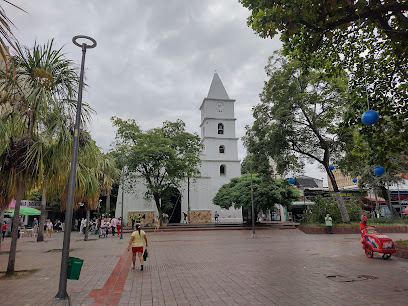
Malecón Río Magdalena / Río Yuma
Experience the breathtaking beauty of Malecón Río Magdalena, a scenic urban park in Neiva, Huila, perfect for leisurely walks and cultural experiences.

Cacica Gaitana Monument
Explore the Cacica Gaitana Monument in Neiva, a stunning tribute to Indigenous heritage and a must-visit historical landmark in Huila, Colombia.

Tower Mohán
Experience breathtaking views and adventure at Tower Mohán, Neiva's premier observation deck and hiking destination in the heart of Huila's natural beauty.
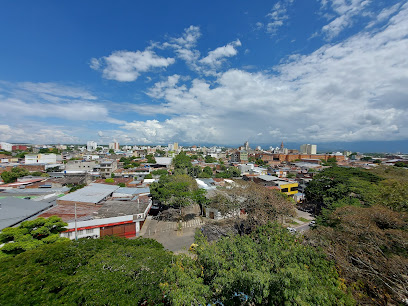
Museo Prehistórico Huilassik Park
Explore the rich prehistoric heritage of Huila at Museo Prehistórico Huilassik Park, a must-visit destination for culture and history enthusiasts.
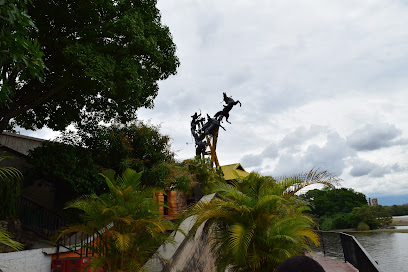
Escultura Malecón
Explore the Escultura Malecón in Neiva, a historical landmark blending culture, art, and stunning riverfront views.

Edificio Nacional
Explore Edificio Nacional in Neiva, a stunning neoclassical landmark rich in history and vibrant local culture, perfect for photography and cultural immersion.
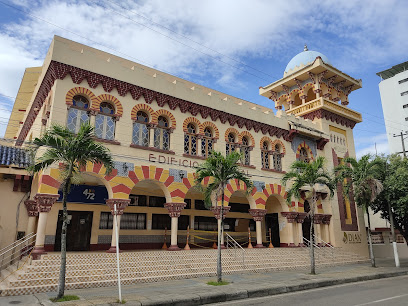
Monumento a la Madre Tierra
Discover the Monumento a la Madre Tierra, a stunning sculpture in Neiva celebrating nature's beauty and environmental awareness.

Sur Andino Casino
Discover the vibrant entertainment at Sur Andino Casino in Neiva, Huila - a top destination for gaming, dining, and nightlife excitement.
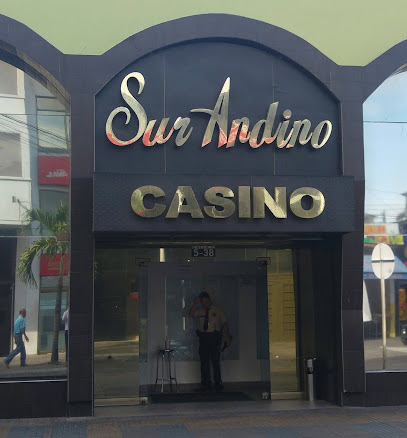
Monument take me on You
Discover Neiva's history at Monument Take Me On You, a stunning landmark celebrating the cultural heritage of Huila.

Monumento Quinto Centenario
Explore Neiva's Monumento Quinto Centenario, a striking tribute to history and culture, showcasing Colombia's rich heritage in a breathtaking setting.
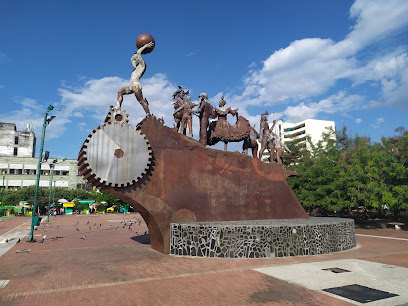
Monumento mohan
Discover the cultural significance of Monumento Mohan, a key landmark in Neiva, Huila, embodying local legends and natural beauty.
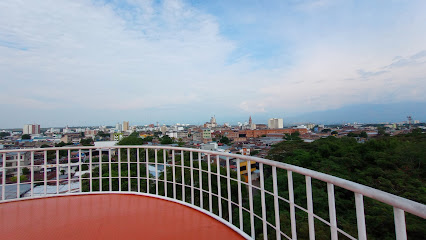
MASTE VIRGENES
Explore MASTE VIRGENES, a modern art museum in Neiva, Huila, showcasing contemporary Colombian artistry and culture.
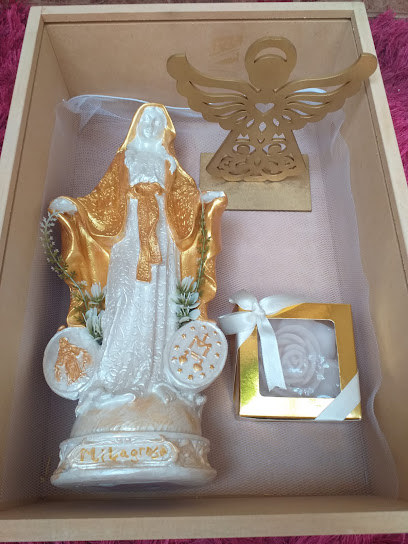
Monumento Intihuantana
Explore the Monumento Intihuantana in Neiva, a cultural landmark that embodies the spirit and history of Colombia's indigenous peoples.
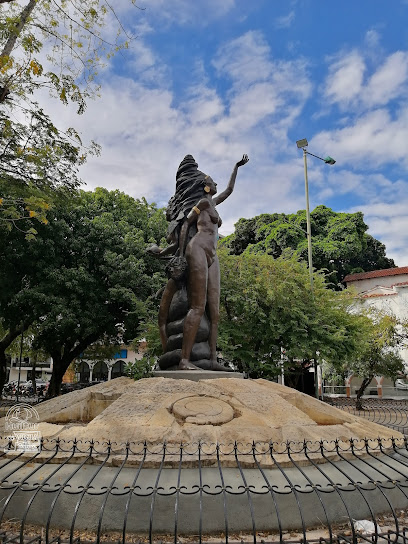
Parque Principal
Explore the vibrant Parque Principal in Neiva, Huila, a cultural gem with lush landscapes and rich history, perfect for relaxation and local experiences.

Unmissable attractions to see
Malecón Río Magdalena / Río Yuma
Discover the beauty and culture of Neiva at Malecón Río Magdalena, a scenic riverside park perfect for relaxation and exploration.
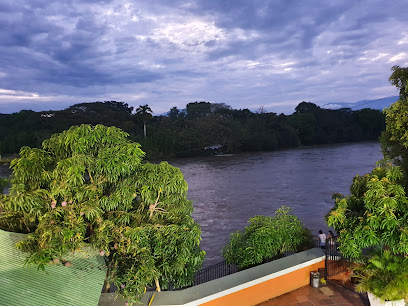
Tatacoa Desert
Explore the stunning landscapes and unique biodiversity of the Tatacoa Desert, a must-visit natural wonder in Huila, Colombia.

Astronomical Observatory Astrosur
Discover the mystical desert of Tatacoa, a stargazer's haven in Colombia, blending stunning landscapes with extraordinary astronomical experiences.

Observatorio Astronómico VYCTORIASTARS Tatacoa
Experience the wonders of the universe at Observatorio Astronómico VYCTORIASTARS in the stunning Tatacoa Desert, Colombia.
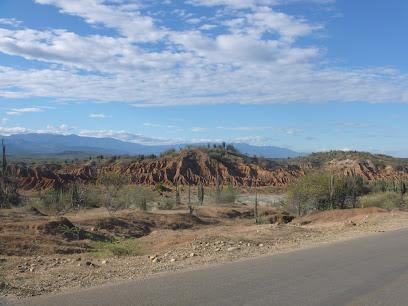
Tower Mohán
Explore Tower Mohán in Neiva, Huila - an iconic observation deck offering stunning views, hiking trails, and vibrant natural beauty.
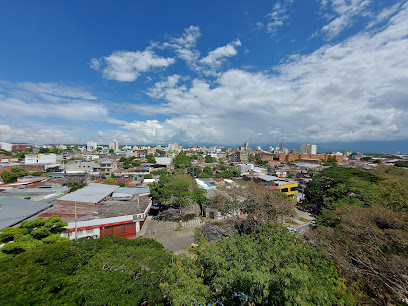
Museo Prehistórico Huilassik Park
Discover the rich heritage of Neiva at Museo Prehistórico Huilassik Park, where ancient history comes alive through fascinating exhibits and artifacts.
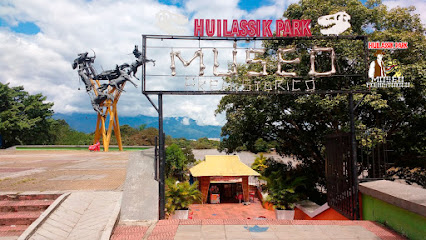
Edificio Nacional
Explore Edificio Nacional in Neiva - a stunning blend of history, culture, and architecture in the heart of Huila, Colombia.
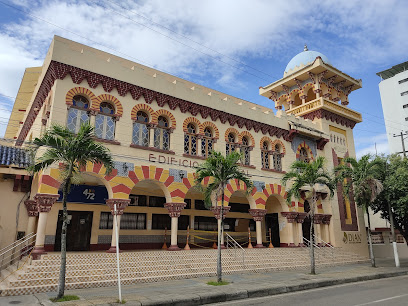
Sur Andino Casino
Discover the thrill of gaming at Sur Andino Casino in Neiva, where entertainment meets nightlife for an unforgettable experience.

Mirador El Mohan
Experience the stunning vistas and local culture at Mirador El Mohan, a must-visit viewpoint in Neiva, Huila, Colombia.
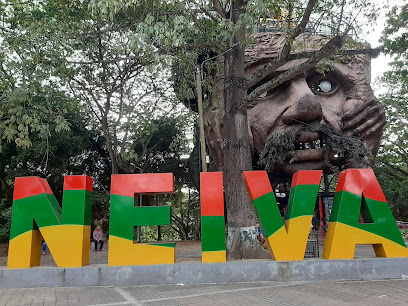
Estatuas Mitos Y Leyendas
Explore Estatuas Mitos Y Leyendas in Neiva, where local myths come alive through breathtaking sculptures in a captivating theme park setting.
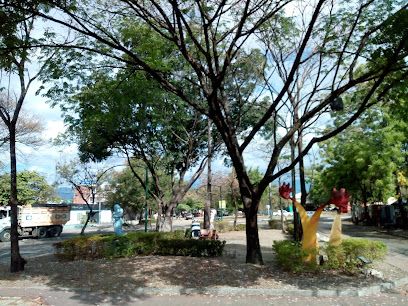
Essential places to dine
Fonda Los Arrieros Neiva SAS
Experience authentic Colombian flavors at Fonda Los Arrieros Neiva - where tradition meets taste in every bite.
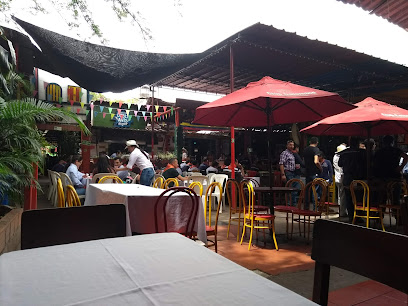
Restaurante La Casa del Folclor
Discover the authentic taste of Huila at Restaurante La Casa del Folclor, where traditional Colombian flavors come alive in a vibrant setting.
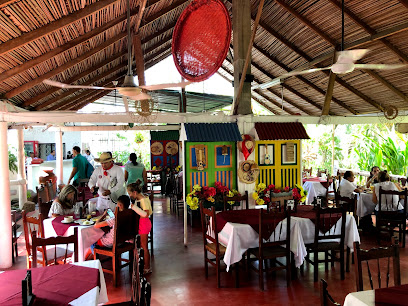
El Tinajon
Discover authentic Colombian flavors at El Tinajon in Neiva—a culinary experience that celebrates tradition with every bite.
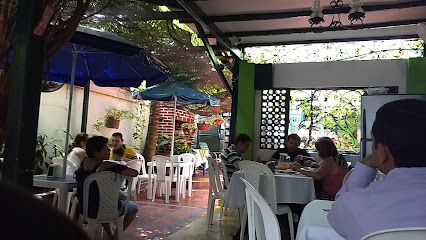
El Patio Casa Cultural & Restaurante
Experience authentic Colombian flavors at El Patio Casa Cultural & Restaurante in Neiva - where culture meets culinary delight.
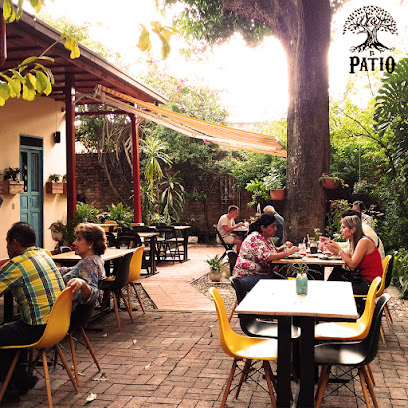
Restaurante Avenida
Experience authentic Colombian cuisine at Restaurante Avenida in Neiva - where flavor meets tradition in a vibrant dining atmosphere.
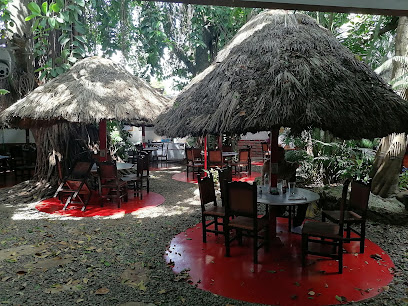
Cevicheria Y Restaurante Cartagena
Experience authentic Colombian ceviche at Cevicheria Y Restaurante Cartagena in Neiva – a must-visit for seafood lovers seeking vibrant coastal flavors.

El Gato con Botas
Discover the vibrant flavors of Colombia at El Gato con Botas, where every meal is a celebration of local cuisine in Neiva.
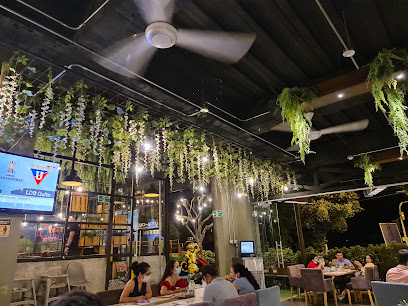
Zoologico
Experience delicious local and international cuisine at Zoologico in Neiva - a vibrant dining destination for every traveler.
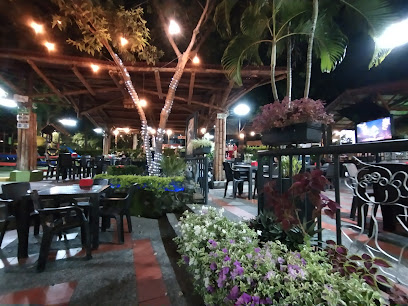
El Arbol
Discover authentic Italian cuisine at El Arbol in Neiva - where every dish tells a story of flavor and tradition.
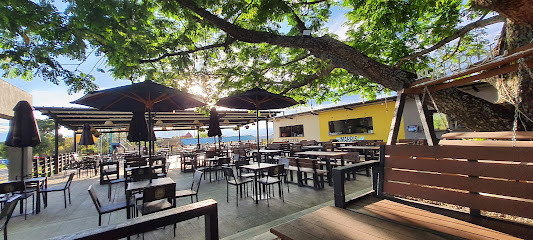
Istanbul Gastro Pub
Discover the culinary gem of Neiva at Istanbul Gastro Pub - where local meets global in every delicious bite.
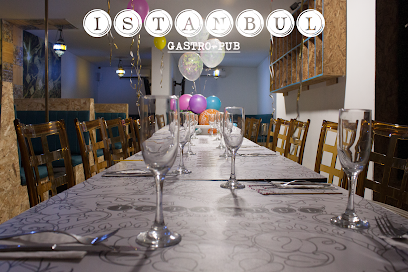
Restaurante Punto Verde
Discover authentic local flavors at Restaurante Punto Verde in Neiva - a delightful culinary haven for food lovers.

Restaurante Pincho Parrilla
Discover authentic Colombian grilled cuisine at Restaurante Pincho Parrilla in Neiva - where every bite tells a story.
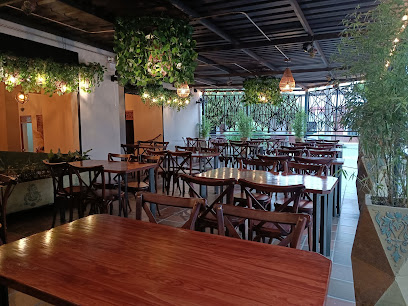
Restaurante El Solar
Discover authentic Colombian cuisine at Restaurante El Solar in Neiva – where local flavors meet warm hospitality.

Artesian Gastrobar, Neiva
Discover the vibrant flavors at Artesian Gastrobar in Neiva – where expertly grilled dishes meet a lively pub atmosphere.
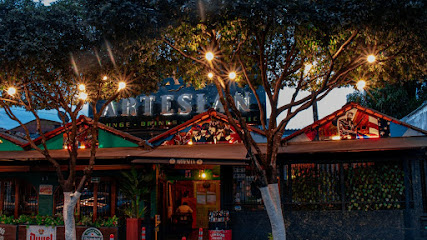
Plaza Majagua Neiva
Experience authentic Colombian cuisine at Plaza Majagua Neiva - where local flavors meet warm hospitality in the heart of Huila.
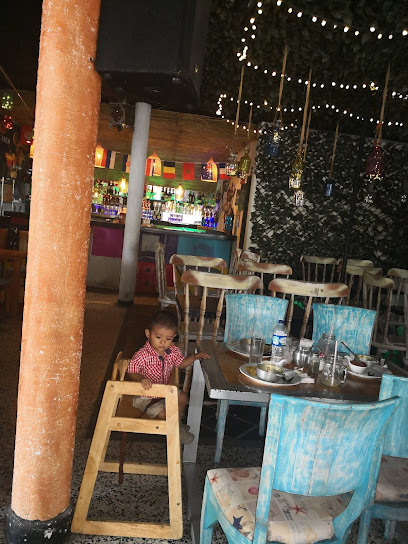
Markets, malls and hidden boutiques
San Pedro Plaza Shopping Center
Experience shopping and culture at San Pedro Plaza Shopping Center in Neiva, where local charm meets global brands.
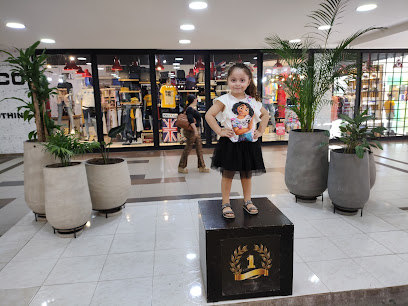
Centro Comercial UNICO Outlet Neiva
Experience shopping like never before at Centro Comercial UNICO Outlet Neiva, where fashion, food, and fun await in a vibrant atmosphere.
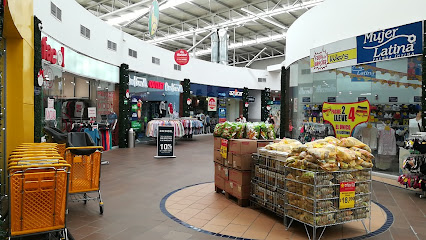
Unicentro Neiva
Discover the vibrant shopping, dining, and entertainment experience at Unicentro Neiva, the ultimate destination in Huila.
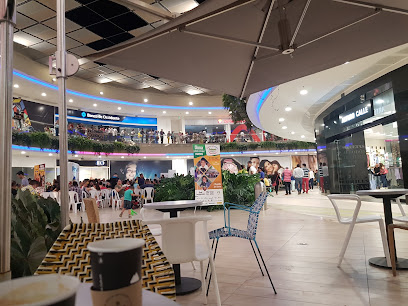
Mattelsa Neiva - Tienda de Ropa
Explore trendy fashion at Mattelsa Neiva, a top clothing store in Huila offering stylish apparel for all occasions.

Sex Shop Neiva Dulce Gatita
Discover Dulce Gatita in Neiva, a vibrant adult entertainment store offering a wide selection of lingerie, toys, and accessories for all tastes.
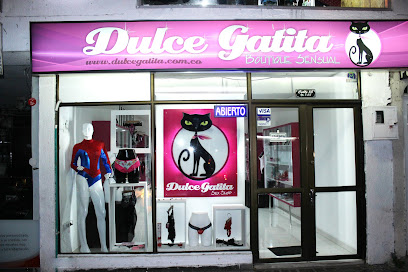
Kátua
Discover trendy fashion at Kátua, Neiva's premier clothing store, where local culture meets contemporary style in a vibrant shopping experience.
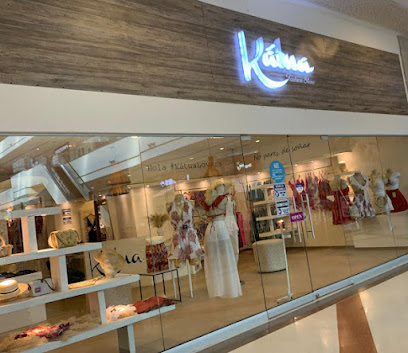
Tentaciones de Amor Neiva
Discover unique souvenirs and local craftsmanship at Tentaciones de Amor Neiva, a gift shop that captures the essence of the region.

Dulce Recuerdo Neiva
Explore memorable gifts and custom t-shirts at Dulce Recuerdo Neiva, a unique shopping experience in the heart of Huila, Colombia.
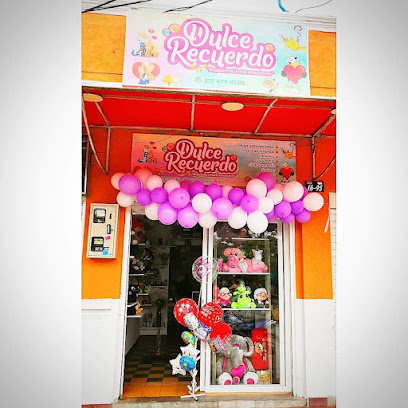
Huellitas Boutique Pets Neiva
Explore Huellitas Boutique Pets in Neiva for premium pet supplies and personalized service, ensuring your furry friends are happy and healthy.
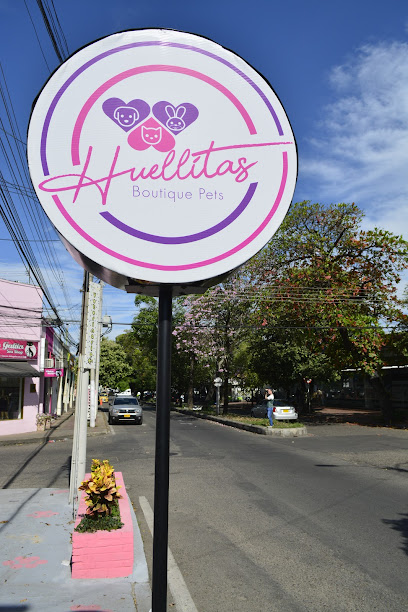
La Tienda de Nohora
Experience the charm of Neiva at La Tienda de Nohora, your go-to convenience store for local snacks and essentials, right in the heart of Huila.

Tù moda, mì moda
Explore Tù moda, mì moda in Neiva, Huila for unique fashion finds that blend contemporary style with local craftsmanship.

Siempre Linda Boutique
Discover the essence of Neiva's fashion at Siempre Linda Boutique, where every piece tells a story of style and elegance.

Cupido Te Llama
Explore Cupido Te Llama in Neiva for unique gifts and local treasures that celebrate the culture of Huila.
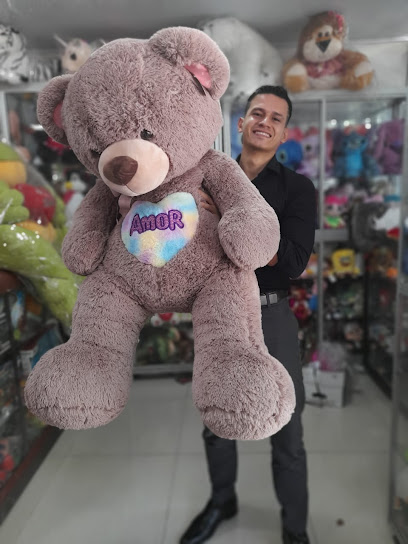
markerhouse
Explore Markerhouse in Neiva for unbeatable outlet shopping experiences, offering great deals and a vibrant atmosphere for all visitors.

FREE NEIVA
Discover FREE NEIVA - a trendy women's clothing store in Neiva, Huila, showcasing stylish apparel that reflects Colombian culture and fashion.
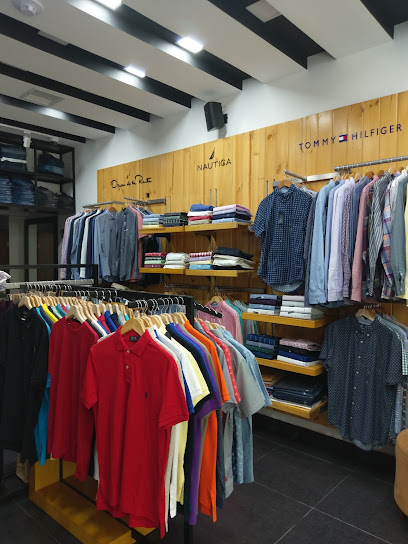
Essential bars & hidden hideouts
El Patio Casa Cultural & Restaurante
Discover the authentic flavors of Huila at El Patio Casa Cultural & Restaurante, where culinary excellence meets cultural heritage in the heart of Neiva.
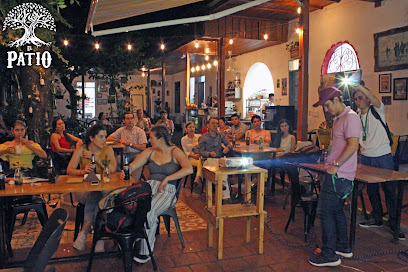
PULL THE PLUG
Discover the lively nightlife at Pull the Plug, an affordable bar and rock music club in Neiva, Huila – where great music meets delicious food.
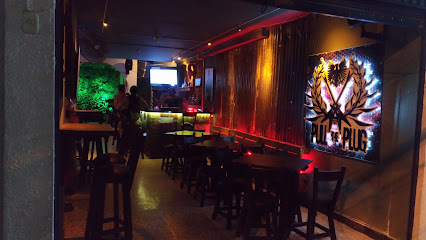
Beer Station - San Pedro NEIVA
Discover a lively bar and grill experience at Beer Station - San Pedro NEIVA, where local flavors and vibrant atmosphere meet.
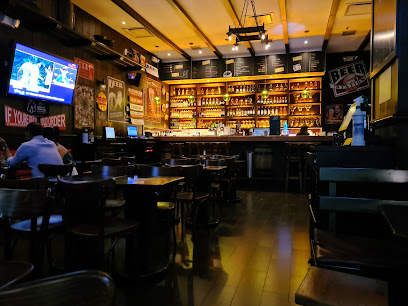
Rushbet Sports Bar Neiva
Experience the thrill of sports and gambling at Rushbet Sports Bar in Neiva, where great food and fun meet.
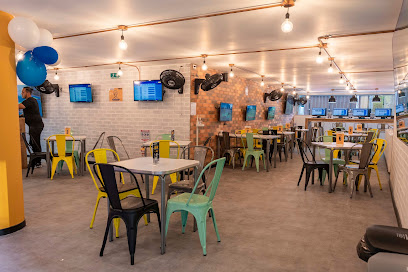
Artesian Gastrobar, Neiva
Experience the vibrant culinary scene at Artesian Gastrobar in Neiva, where flavorful grills and refreshing drinks meet a lively atmosphere.
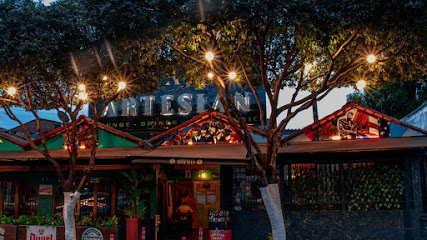
Neiva York / Gastro Pub
Experience the vibrant flavors of Neiva at Neiva York Gastro Pub, where local ingredients meet culinary innovation in a lively bar atmosphere.
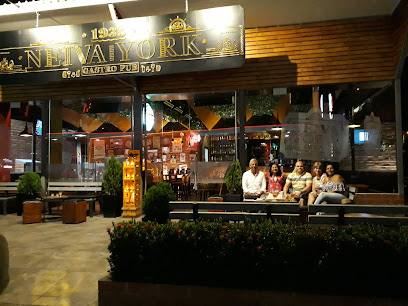
Amalú Gastro pub
Experience the vibrant flavors of Colombia at Amalú Gastro Pub in Neiva, where culinary tradition meets modern taste in a delightful atmosphere.
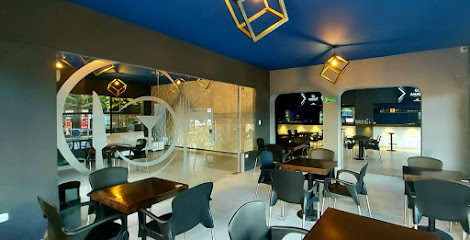
Old Estanco
Discover the vibrant nightlife at Old Estanco, a bar in Neiva offering a mix of local drinks and lively entertainment.
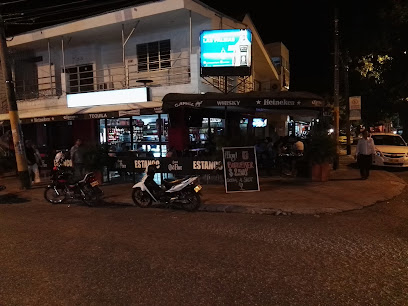
Colorín Colorado Shots
Discover the vibrant nightlife at Colorín Colorado Shots, a lively bar in Neiva, Huila, offering a unique blend of local culture and delicious drinks.
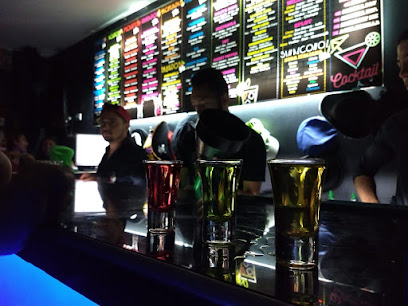
Cajuca Bar Neiva
Discover the lively Cajuca Bar Neiva, a quintessential stop for tourists seeking a vibrant nightlife experience in Colombia's Huila region.
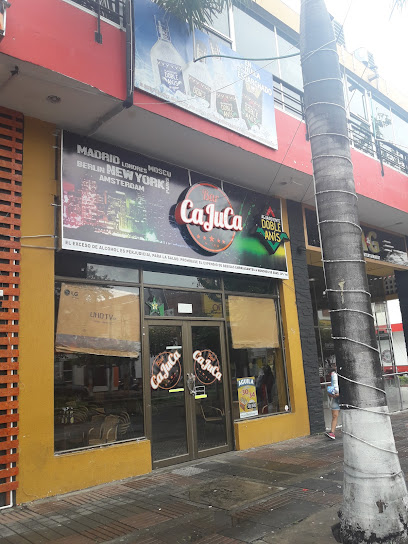
La Bodega Karaoke Bar
Experience the vibrant nightlife at La Bodega Karaoke Bar in Neiva, where unforgettable performances and lively atmosphere await you.
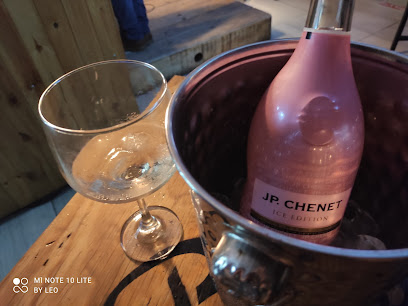
Botánico Bar Neiva
Experience the essence of Neiva's nightlife at Botánico Bar, where vibrant cocktails and lively music create unforgettable moments.
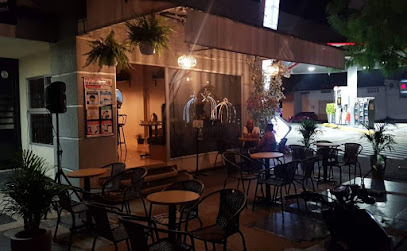
Night traiN Bar
Experience the vibrant nightlife at Night traiN Bar, Neiva's premier spot for cocktails, live music, and a lively atmosphere.
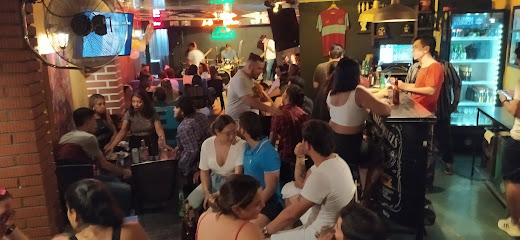
Pola Y Sabor
Discover the vibrant nightlife and local flavors at Pola Y Sabor, a top bar destination in Neiva, Colombia.
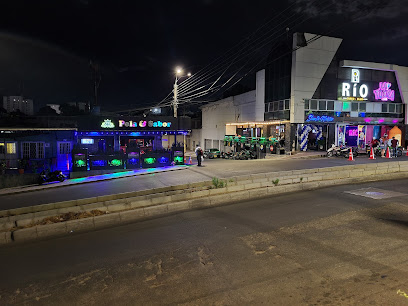
BYL - Bar
Experience the vibrant nightlife at BYL Bar in Neiva, where delicious cocktails and a lively atmosphere await you.
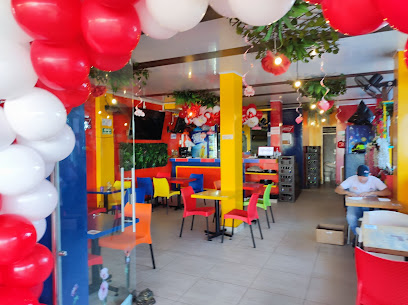
Local Phrases
-
- HelloHola
[O-la] - GoodbyeAdiós
[A-di-ós] - YesSí
[Sí] - NoNo
[No] - Please/You're welcomePor favor/De nada
[Por fa-vor/De na-da] - Thank youGracias
[Gra-cias] - Excuse me/SorryPerdón/Lo siento
[Per-dón/Lo sien-to] - How are you?¿Cómo estás?
[¿Có-mo es-tás?] - Fine. And you?Bien. ¿Y tú?
[Bien. ¿Y tú?] - Do you speak English?¿Hablas inglés?
[¿Ha-blas in-glés?] - I don't understandNo entiendo
[No en-tien-do]
- HelloHola
-
- I'd like to see the menu, pleaseQuisiera ver el menú, por favor
[Qui-sie-ra ver el me-nú, por fa-vor] - I don't eat meatNo como carne
[No co-mo car-ne] - Cheers!¡Salud!
[¡Sa-lud!] - I would like to pay, pleaseMe gustaría pagar, por favor
[Me gus-ta-ría pa-gar, por fa-vor]
- I'd like to see the menu, pleaseQuisiera ver el menú, por favor
-
- Help!¡Ayuda!
[¡A-yu-da!] - Go away!¡Vete!
[¡Ve-te!] - Call the Police!¡Llama a la Policía!
[¡Ya-ma a la Po-li-cía!] - Call a doctor!¡Llama a un doctor!
[¡Ya-ma a un doc-tor!] - I'm lostEstoy perdido
[Es-toy per-di-do] - I'm illEstoy enfermo
[Es-toy en-fer-mo]
- Help!¡Ayuda!
-
- I'd like to buy...Me gustaría comprar...
[Me gus-ta-ría com-prar...] - I'm just lookingSolo estoy mirando
[So-lo es-toy mi-ran-do] - How much is it?¿Cuánto cuesta?
[¿Cuan-to cues-ta?] - That's too expensiveEso es muy caro
[E-so es muy ca-ro] - Can you lower the price?¿Puede bajar el precio?
[¿Pue-de ba-jar el pre-cio?]
- I'd like to buy...Me gustaría comprar...
-
- What time is it?¿Qué hora es?
[¿Qué ho-ra es?] - It's one o'clockEs la una
[Es la u-na] - Half past (10)Las diez y media
[Las diez y me-dia] - MorningMañana
[Ma-ña-na] - AfternoonTarde
[Tar-de] - EveningNoche
[No-che] - YesterdayAyer
[A-yer] - TodayHoy
[Hoy] - TomorrowMañana
[Ma-ña-na] - 1Uno
[U-no] - 2Dos
[Dos] - 3Tres
[Tres] - 4Cuatro
[Cua-tro] - 5Cinco
[Cin-co] - 6Seis
[Seis] - 7Siete
[Sie-te] - 8Ocho
[O-cho] - 9Nueve
[Nue-ve] - 10Diez
[Diez]
- What time is it?¿Qué hora es?
-
- Where's a/the...?¿Dónde está...?
[¿Dón-de es-tá...?] - What's the address?¿Cuál es la dirección?
[¿Cual es la di-rec-ción?] - Can you show me (on the map)?¿Puedes mostrarme (en el mapa)?
[¿Pue-des mos-trar-me (en el ma-pa)?] - When's the next (bus)?¿Cuándo es el próximo (bus)?
[¿Cuan-do es el pró-xi-mo (bus)?] - A ticket (to ....)Un tiquete (para ...)
[Un ti-que-te (pa-ra ...)]
- Where's a/the...?¿Dónde está...?
History of Neiva
-
Neiva was officially founded on May 24, 1612, by Captain Diego de Ospina y Medinilla. Positioned strategically along the Magdalena River, Neiva became an essential outpost for the Spanish colonial administration, facilitating trade and communication between the interior of Colombia and the Caribbean coast.
-
Before Spanish colonization, the region around Neiva was inhabited by the Páez, Pijao, and Tamana indigenous groups. These communities were known for their rich cultural traditions, intricate crafts, and agricultural practices. Despite the impact of colonization, their influence remains evident in the region's cultural tapestry.
-
During Colombia's fight for independence from Spanish rule, Neiva played a significant role as a strategic location for the revolutionary forces. Notably, the city served as a refuge and meeting point for leaders such as Simón Bolívar and José María Córdova. This period marked Neiva as a symbol of resilience and patriotism.
-
In the 19th century, Neiva saw a significant economic shift with the rise of cattle ranching. The expansive plains of the region provided ideal conditions for livestock, transforming Neiva into a major center for cattle trade. This industry brought prosperity and contributed to the city's growth and development.
-
On February 9, 1967, Neiva was struck by a devastating earthquake that caused severe damage to the city. Many buildings were destroyed, and the event marked a turning point in the city's architectural landscape. The reconstruction efforts that followed led to modern urban development while preserving some of the historical structures.
-
Neiva is renowned for its annual San Pedro Festival, a vibrant celebration held in June. This event, rooted in colonial traditions, features folkloric dances, music, parades, and beauty pageants. The festival showcases the rich cultural heritage of Neiva and attracts visitors from all over Colombia and beyond.
-
The Magdalena River has been a lifeline for Neiva, shaping its economic and cultural development. Historically, the river served as a major transportation route, facilitating trade and communication. Today, it remains a vital resource for fishing, agriculture, and tourism, reflecting Neiva's enduring connection to its natural environment.
Neiva Essentials
-
Neiva is the capital of the Huila Department in Colombia. The most common way to reach Neiva is by air via Benito Salas Airport, which has regular flights from Bogotá. From the airport, you can take a taxi or a shuttle service to the city center, which is about 10 minutes away. Alternatively, you can travel by bus from major cities like Bogotá, Cali, and Medellín. The bus ride from Bogotá takes approximately 6 hours.
-
Neiva has various transportation options including taxis, buses, and moto-taxis. Taxis are widely available and relatively inexpensive, but it’s advisable to use registered taxi services for safety. The city also has a bus system that covers most areas, and buses are a cost-effective way to get around. For shorter distances, moto-taxis are a quick and convenient option, though less safe than other modes of transport.
-
The official currency of Colombia is the Colombian Peso (COP). Credit cards are accepted in most hotels, restaurants, and larger shops, but it is a good idea to carry cash for smaller establishments and markets. ATMs are readily available in Neiva, but make sure to withdraw sufficient cash if you plan to visit rural areas where ATMs may be scarce.
-
Neiva is generally safe for tourists, but like any city, it’s important to stay vigilant. Avoid walking alone at night, especially in unfamiliar or poorly lit areas. Neighborhoods such as Las Granjas and El Altico have higher crime rates, so exercise caution if visiting these areas. Always keep an eye on your belongings in crowded places, and avoid displaying valuable items openly.
-
In case of an emergency, dial 123 for immediate assistance, which covers police, medical, and fire emergencies. Neiva has several hospitals and clinics, including Hospital Universitario Hernando Moncaleano Perdomo, which is well-equipped for most medical situations. It’s advisable to have travel insurance that covers medical emergencies. Pharmacies are available throughout the city for minor health issues and over-the-counter medications.
-
Fashion: Do dress modestly, especially when visiting religious sites. Light, breathable clothing is recommended due to the warm climate. Religion: Do respect local customs, including removing hats when entering churches and other religious sites. Public Transport: Do be mindful of your belongings and respectful to other passengers. Avoid eating or drinking on public transport. Greetings: Do greet people with a handshake; it’s customary to address people formally until invited to do otherwise. Eating & Drinking: Do try local dishes and accept food offerings graciously. Don’t refuse hospitality, as it is considered impolite.
-
To experience Neiva like a local, visit the local markets such as Plaza Cívica Los Libertadores where you can buy fresh produce and traditional Huila products. Engage with locals, as they are often friendly and willing to share stories about the city's history and culture. Don’t miss the San Pedro Festival in late June, a vibrant celebration featuring traditional music, dance, and cuisine. For a unique experience, visit the Magdalena River waterfront for a scenic walk or boat ride.
Trending Landmark in Neiva
-
Parque Central Santander
-
Malecón Río Magdalena / Río Yuma
-
Cacica Gaitana Monument
-
Tower Mohán
-
Museo Prehistórico Huilassik Park
-
Escultura Malecón
-
Edificio Nacional
-
Monumento a la Madre Tierra
-
Sur Andino Casino
-
Monument take me on You
-
Monumento Quinto Centenario
-
Monumento mohan
-
MASTE VIRGENES
-
Monumento Intihuantana
-
Parque Principal
Nearby Cities to Neiva
-
Things To Do in Cali
-
Things To Do in Popayán
-
Things To Do in Ibagué
-
Things To Do in Armenia
-
Things To Do in Pereira
-
Things To Do in Villavicencio
-
Things To Do in Manizales
-
Things To Do in Bogotá
-
Things To Do in Pasto
-
Things To Do in Tunja
-
Things To Do in Medellín
-
Things To Do in Ibarra
-
Things To Do in Otavalo
-
Things To Do in Quito
-
Things To Do in Mindo









